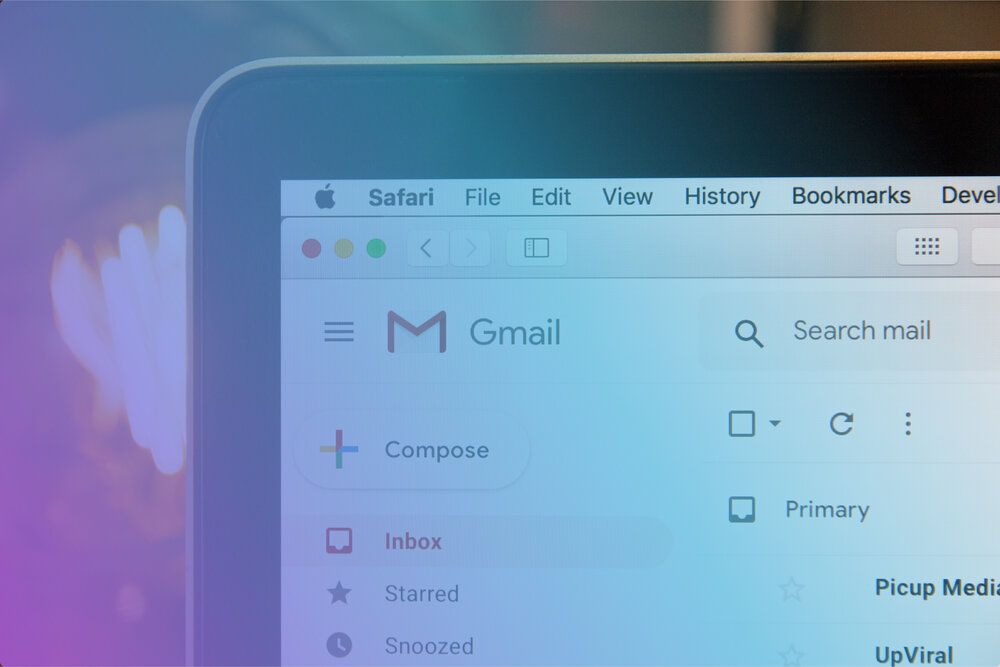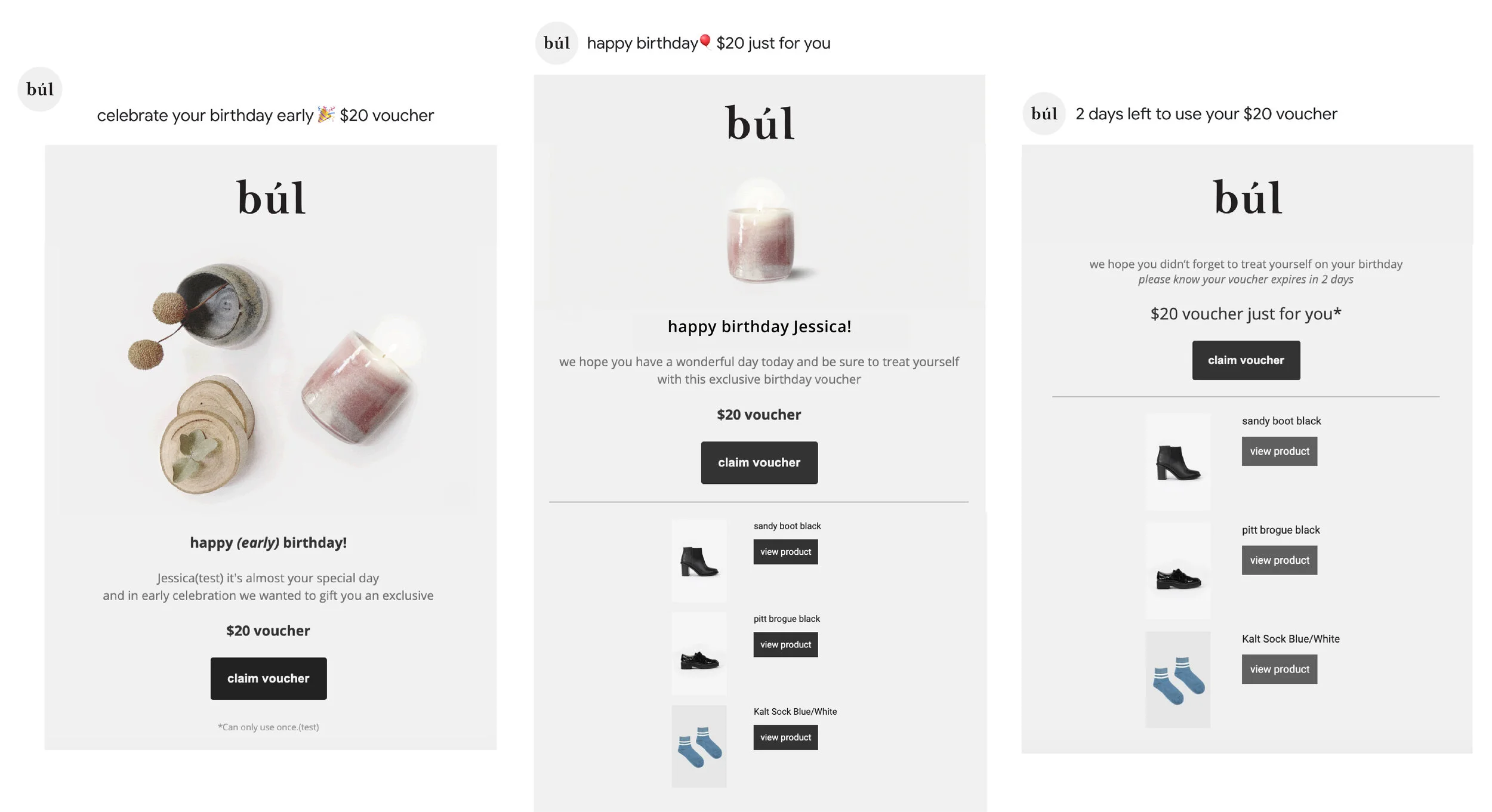

We talk about email marketing quite a bit here on the Marsello blog, and for good reason – it continues to be one of the most effective ways to drive sales and engagement for retail brands. That’s why it’s so important to continuously build your list, optimize your copy, and run winning campaigns.
However, all the optimization in the world won’t help you if your messages aren’t being delivered. And the truth is that a significant chunk (20% according to Return Path) of emails don’t even reach the inbox.
But you don’t have to be part of that statistic. By implementing the right steps and best practices, you can maximize your email deliverability and ensure that your messages actually hit the inbox of your audience.
Read on to learn exactly what you need to do.
1. Improve your email sender reputation
Think of your customers’ inbox as an exclusive club that bans shady characters. When the gatekeepers deem a sender as having a poor reputation, their messages are sent to the spam folder.
When it comes to sender reputation, email service providers typically look at two things: your IP reputation and your domain reputation.
Here’s a breakdown of these two components and how you can improve them.
IP reputation
Emails are sent from an IP address – a unique identifier that ties a device to a specific network. Think of it a bit like a fingerprint for your emails. It tracks where emails come from, the reputation of that ESP (email service provider) and the email account itself. If you have a reputation of sending spammy emails, there’s a good chance that messages sent from that IP will be automatically flagged as spam and your emails won’t land front and center in your customers’ inboxes.
In the world of eCommerce and physical store email marketing, brands can send emails using a customized domain name if their marketing provider has this function (Marsello makes this easy for retailers. Learn more here).
How can you improve your IP reputation?

Choose a good email marketing platform – If you’re opting for a custom domain (also sometimes referred to as a shared IP address), make sure you’re using a reputable email marketing platform. The best-in-class email marketing companies work hard to keep the reputation of their IP addresses in top shape by giving their users the tools and education they need to comply with anti-spam laws.
Most email marketing platforms also have systems that prevent abuse and spam. Marsello, for example, has an abuse-prevention system called SpamAssassin, which checks for spam traps, abuse complaints, and hard bounces.

Gradually build up your IP’s reputation over time – If you’re using a dedicated IP address for your email marketing efforts, you’ll need to build and maintain its reputation yourself.
Much like with building financial credit, developing a solid IP reputation entails having a solid track record of sending high-quality emails. This means having high open rates and minimal spam flags from recipients.
If you’re using a new IP address for your emails, you can build up its reputation by only sending messages to a small but active list of people who love your brand. This will help boost your engagement metrics, which sends the message that you’re a high-quality sender.
In turn, this boosts your reputation, which ultimately increases your email deliverability.

Monitor your reputation – If you’re suffering from poor email deliverability and you think your IP address is the culprit, then use a tool like Sender Score to check the IP’s rep.
Sender Score lets you enter an IP address, and its system will score it based on how reputable it is. The higher the score the better the reputation.

Domain reputation
When it comes to domain reputation, your messages are evaluated based on your sending domain, instead of, or in addition to your IP address.
Email service providers have different metrics for evaluating messages, but Gmail (arguably the #1 email provider in the world) seems to favor domain reputation over IP.
How can you improve your domain reputation?
Build up a good rep – A good domain reputation must be earned. Just like with building your IP rep, your domain needs to come across as reputable and high-quality for email service providers to not flag it as spam.
You can do this by sending high-quality messages to an engaged user base and increasing your metrics over time.
Monitor your domain reputation – Check your domain reputation using a tool like MX Lookup Tool, which checks a domain against common blacklists.

2. Steer clear of spam traps
Spam traps are email addresses used by email service providers to catch malicious senders. They look just like a typical email address, but they’re not used by a real person. Their only purpose is to catch spam, so when a person or company sends a message to a spam trap email, the provider can flag or blacklist the sender.
There are a number of ways that providers can set up spam traps. They include:
Pristine traps – A common one is called a pristine spam trap, which is an email address that is publicly displayed on a website BUT isn't visible to normal users. Pristine traps are meant to capture bots that are scraping the web for email addresses.
Expired or inactive email addresses – These are email addresses that have been deactivated by the company that issued them or by email service providers. In some cases, companies and providers may decide to reactivate these email addresses for the purposes of catching spam.
How to avoid spam traps
Spam trap email addresses can sometimes end up on the list of senders with good intentions. Here’s how you can ensure that your list stays spam-trap free:
Don’t purchase email lists – The email addresses that end up on lists for sale are often obtained through unethical means (like scraping the web). When you buy a list, you may end up with a handful of spam trap emails on your hands.
Clean up your lists regularly – A great way to make sure that you don’t have spam trap emails on your list is to prune it. Identify emails that have no engagement over the last six months or so, then remove them from your list.
You should also clean up email addresses that have returned a hard bounce (i.e., when emails are undeliverable). Hard bounces indicate that an email address is no longer valid, and should thus be removed from your list. Some email marketing platforms do this for you automatically, so check with your provider to see if this is a feature they offer.
3. Make it easy for people to opt-out
Giving people an easy way to opt-out seems counter-intuitive, because most email marketers want to keep people on their list.
However, making users jump through too many hoops just to unsubscribe is doing you more harm than good.
Here’s why:
When people can’t easily unsubscribe from your emails, they may end up marking it as spam – which, as you already know, will hurt your email deliverability.
So, resist the urge to hide the unsubscribe button. Instead, have a clear, clickable link on all your messages, and allow your subscribers to opt-out in just a click or two.
Check out this footer from the email of PetConnect. A standard location for the unsubscribe button is at the bottom of the footer, and PetConnect keep it simple. The last piece of their email gives readers the option to unsubscribe. While it’s not advertised and encouraging for customers, it is easy to find, underlined and simple to understand. Although with emails that cute, who’d really want to unsubscribe?

4. Customize your ‘from’ name / sender field
One of the reasons you may have poor email engagement rates is that people don’t recognize you when your messages hit their inbox. When users don’t know the sender, they’re more likely to delete the message without reading it, or worse, mark it as spam.
That’s why you should ensure that your sender name is consistent with your brand and is easily recognizable by users.
If you’re marketing yourself as “Bloom Skincare” then you shouldn’t send messages from “Jane Smith”. Instead, have your brand name in the “from” field of your emails – i.e., “Jane from Bloom Skincare” or “The Bloom Skincare Team”.
This email from CAUSEBOX serves as an excellent example of a retailer that uses a real person behind each email, while still including their brand name.

5. Avoid misleading subject lines
Another temptation you may have is to write intriguing or exciting subject lines without having content or offers that actually live up to the hype.
Avoid this tactic at all costs.
While ‘creative’ subject lines may get people to open your message, they will likely mark your email as spam if the content doesn’t deliver on the subject line’s promises.
Instead, find ways to write exciting subject lines while still being upfront with the email’s content.
Take a look at the following email from GILT, an ecommerce site that sells luxury goods. The subject line – $99.99 Sunglasses SALE. Believe your eyes – is straightforward and tells customers exactly what they’re getting. But it’s also cleverly written and compelling because, well… who doesn’t like $99 designer sunglasses?

6. Don’t use spammy words
Another subject line tip? Avoid spam-trigger words, phrases, and characters.
Hubspot and Simply Cast shared a long list of words and phrases to avoid, but here are the top ones that apply to retail and ecommerce:
-
Words like “FREE!,” “Guarantee,” and “Clearance”
-
Using ALL CAPS
-
Having “RE:” when it’s not a reply
-
One-word subject lines
-
Excessive use of exclamation points (!!!)
-
Excessive use of characters like “$$$”
-
Excessive use of emojis
7. Stick to a consistent email schedule
Irregular sending patterns can raise flags, so strive to find the best sending schedule that works for you, and avoid changing things up too often.
There are no one-size-fits-all rules when it comes to when to send emails and how often to do it. Since every company is different, you need to find a time and frequency that resonates with your audience.
One way to do is to gradually test out different sending patterns and frequencies, then measuring the performance of your messages.
When you find a good email sending pattern, stick with it.
8. Send emails that people love
We’ve covered the tech-related side of increasing email deliverability, and while the tips above are solid best practices, they won’t guarantee that your messages will be seen and opened.
At the end of the day, the best way to boost the deliverability of your messages is to send emails that people open and click regularly.
How can you do that?
Simple; send messages that your subscribers love.
Create content that’s so compelling, people actually look forward to hearing from you. It’s a simple tip, but it’s not always easy to do, particularly when you’re competing with hundreds (if not thousands) of other brands for people’s attention.
Follow these pointers and examples on how to send messages that subscribers can’t help but click:
Keep it super relevant
Segment your customers based on their demographic details and shopping behavior, and use that data to inform your email marketing.
For instance, if you know that a shopper has kids, then you can send them mom-centric emails. Or, if you keep track of the purchase histories of your customers, you can leverage their data to craft email content and offers based on their profile.
Stitch Fix did this really well when it launched its kids line, Stitch Fix Kids. The subscription service reached out to members who ordered maternity clothes and sent them an exclusive invite to the service.

Ask for their input
Requesting for customer feedback doesn’t just help you gather more intel, it also shows that you value your customers’ opinions. Most shoppers – 71% according to this study – are happy to offer their feedback when asked. So, these types of messages will likely generate higher engagement (which is great for email deliverability – yay)!
Buda Juice, a speciality pressed juices distributor, puts this tip to good use. The company sends feedback requests to customers to measure their satisfaction. Buda Juice crafts messages that are easy to read and act on, so the whole customer experience is smooth and convenient.

Send a timely message
Use different events and holidays as opportunities to engage with your audience. If you haven’t done so yet, create a marketing calendar with events throughout the year, and then craft seasonal content for each occasion.
Need help doing this? We've put together a calendar schedule highlighting best days and times to send your holiday email campaigns to make sure you never miss an opportunity. Download it for free here.

Here’s another tip: keep track of each customer’s birthday and send them a timely perk that they can use on their special day.
Australian clothing retailer, Búl, for example, sends members of its rewards program a $20 voucher 7 days before their birthday. To make sure customers don’t miss out on the deal, Búl also sends them an email on the day of the customer’s birthday and then a final email to remind them to use the $20 voucher. The final two emails of this flow also include product recommendations designed to pique customers’ interest and get the shopping. Read more on the success of Búl’s Happy Birthday Email Flow in their recent case study.

Pro tip: did you know that you can use Marsello to reward your customers on their birthday? When you set up "Happy Birthday Rewards" on your loyalty program, you’ll be able to automatically award birthday celebrants with extra perks on their birthday!
9. Analyze your email marketing reports
You know what they say: you can’t improve what you don’t measure.
The same thing applies to email deliverability. If you want to increase your deliverability rate, then you need to track the performance of your campaigns.
In particular, you should keep an eye on:
Open rates – This will shed light on the performance of your subject lines, so you can determine if your copy is getting people interested in reading the rest of your emails.
Click-to-open-rate (CTOR) – CTOR measure the number of unique clicks relative to the number of unique opens. It's a good measure of how an email's content has performed. A high CTOR could indicate that your subject line and email copy are working well together and reaching the right people. Conversely, a low CTOR could mean that your email copy isn't resonating with readers and there might be a disconnect between the subject line and content of the email.
Bounce rates – Pay attention to email bounces – particularly hard bounces, because these indicate that an email address is invalid. You want to remove those emails from your list ASAP to avoid falling into spam traps.
Final words
You need to take a number of steps to improve email deliverability, and while some of them aren’t sexy, they are absolutely necessary if you want to land on your customers’ inbox.
If you haven’t done so yet, take the time to evaluate your email marketing efforts. Check your reputation, clean up your email list, and review your content calendar to ensure that you’re sending top-notch messages.
If you do the above consistently, you’ll not only boost your email deliverability, but you’ll increase your reputation and engagement in the process!

